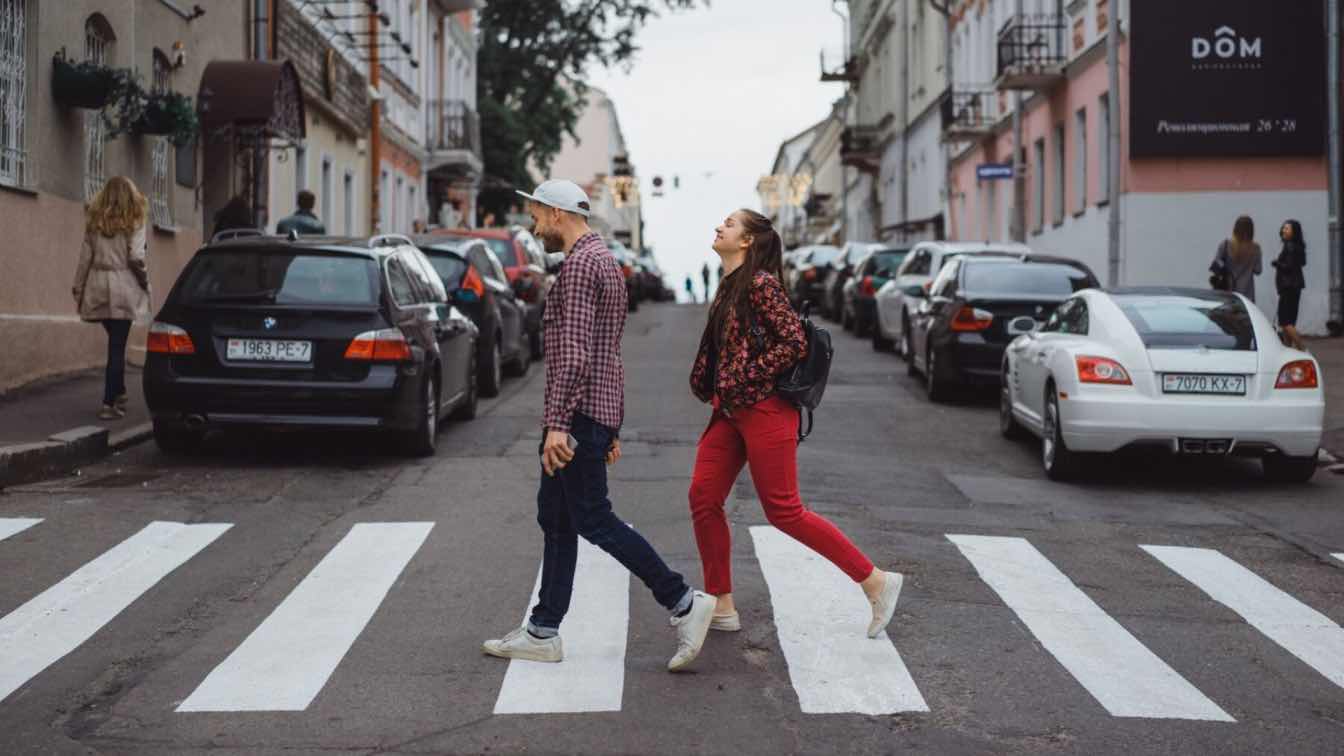Urban design plays a crucial role in shaping how people move through cities, influencing everything from daily commutes to overall safety. A well-designed city should prioritize pedestrians as much as it does vehicles, ensuring that sidewalks, crosswalks, and intersections minimize risks. However, when architecture and urban planning fail to consider pedestrian safety, accidents become more common, leading to injuries and legal disputes.
Pedestrian safety has become a growing concern as more people choose to walk in urban environments. Architects and city planners are now focusing on solutions that encourage walkability while reducing the risks pedestrians face. From wider sidewalks to pedestrian bridges and smart crosswalks, modern urban design has the power to make streets safer. This article explores the relationship between architecture, city planning, and pedestrian safety, highlighting how well-thought-out design choices can prevent accidents and create more livable cities.
The Impact of Poor Urban Design on Pedestrian Safety
In many cities, pedestrians face a variety of hazards due to outdated or poorly planned infrastructure. Narrow sidewalks, a lack of proper crosswalks, and excessive vehicle traffic contribute to dangerous conditions. High-speed roads in urban centers often prioritize vehicle flow over pedestrian well-being, making it difficult for people to cross safely. In some areas, insufficient lighting and obstructed sightlines increase the likelihood of accidents, particularly at night.
Intersections are one of the most dangerous areas for pedestrians, as they often lack features that slow down traffic or improve visibility. Poorly placed crosswalks or intersections with long wait times for pedestrians can encourage jaywalking, further increasing risk. When city planners fail to prioritize pedestrian infrastructure, the results can be devastating. Legal cases involving pedestrian accidents frequently stem from inadequate urban planning, raising questions about liability and responsibility.
The Architectural Elements That Improve Pedestrian Safety
Modern urban design incorporates architectural elements that enhance pedestrian safety while improving walkability. One of the most effective strategies is the creation of wider sidewalks, which provide pedestrians with ample space to move without being forced onto the street. Wider sidewalks also allow for the inclusion of street furniture, trees, and lighting, all of which contribute to a safer and more pleasant walking experience.
Another important architectural feature is the raised crosswalk, which functions like a speed bump, forcing drivers to slow down as they approach pedestrian crossings. Raised crosswalks not only make pedestrians more visible to drivers but also create a natural traffic-calming effect. In cities where these have been implemented, accident rates have significantly decreased.
Pedestrian overpasses and underpasses provide safe alternatives for crossing busy streets. While overpasses are effective, they must be designed in a way that encourages use. Many traditional pedestrian bridges are unappealing due to their long ramps and staircases, making them inaccessible to some individuals. Modern designs now incorporate aesthetic elements, such as greenery and artistic lighting, to make these structures more inviting.
Traffic-calming measures such as curb extensions, median islands, and pedestrian refuges play a vital role in improving safety. Curb extensions shorten the crossing distance for pedestrians while making them more visible to drivers. Median islands allow pedestrians to pause safely while crossing multi-lane roads. These design choices slow down traffic while creating a pedestrian-friendly environment.
In addition to physical structures, the integration of smart technology in urban planning is revolutionizing pedestrian safety. Cities are now implementing smart crosswalks equipped with motion sensors and LED lights that alert drivers when someone is crossing. These high-visibility crosswalks are especially useful at night and in poor weather conditions.
How Legal Considerations Influence Urban Design
When pedestrian accidents occur, questions about liability and accountability often arise. Poorly designed crosswalks, lack of proper signage, or failure to install traffic-calming measures can result in legal action against city planners and property owners. Pedestrian accident attorneys frequently handle cases where negligence in urban design contributed to injuries.
In many cases, cities have been held accountable for failing to provide safe pedestrian infrastructure. Lawsuits have led to changes in urban planning policies, forcing municipalities to adopt better design standards. For example, suppose a pedestrian is hit by a car at an intersection with inadequate signage or malfunctioning traffic lights. In that case, legal experts may argue that the city failed in its duty to maintain safe conditions.
Pedestrian safety is not just a matter of good design; it is also a legal obligation. Architects and planners must consider accessibility laws, safety regulations, and liability concerns when designing urban spaces. Legal professionals specializing in pedestrian accidents play a crucial role in advocating for safer city environments by holding municipalities accountable when poor planning leads to preventable injuries.
The Importance of Mixed-Use Development and Walkable Neighborhoods
The layout of a city directly affects pedestrian safety and the overall walking experience. Mixed-use developments, which combine residential, commercial, and recreational spaces, promote walkability by reducing the need for long-distance travel. When essential services such as grocery stores, schools, and workplaces are within walking distance, people are more likely to choose walking over driving.
Walkable neighborhoods encourage pedestrian activity, but they must be designed with safety in mind. Grid-based street layouts are more pedestrian-friendly than sprawling suburban developments with winding roads and cul-de-sacs. In grid-based designs, streets intersect at regular intervals, allowing for shorter and more predictable walking routes. This setup naturally slows down vehicle traffic and makes it easier for pedestrians to navigate the city.
Public spaces such as plazas, parks, and pedestrian-only streets further enhance safety. When cities dedicate areas solely to foot traffic, the risk of accidents decreases significantly. Countries with well-established pedestrian zones, such as parts of Europe, have seen reductions in pedestrian fatalities due to these design choices.
The Future of Pedestrian-Friendly Architecture
As cities continue to grow, the importance of pedestrian-friendly design will only increase. Architects and urban planners are exploring innovative solutions to create safer, more walkable environments. Sustainable transportation options, such as expanded bike lanes and improved public transit networks, are being integrated into urban planning efforts to reduce car dependency.
Autonomous vehicles may also play a role in future pedestrian safety. With the rise of self-driving technology, cities may need to rethink street layouts to accommodate automated traffic systems that interact seamlessly with pedestrians. Some urban centers are already testing pedestrian-priority streets, where vehicle access is limited, and foot traffic is given precedence.
Green infrastructure is another aspect of future urban design. Cities are incorporating more green spaces, permeable sidewalks, and shaded walkways to encourage walking while improving air quality. These sustainable initiatives benefit both pedestrians and the environment, creating healthier cities overall.
Final Thoughts
The connection between urban design and pedestrian safety is undeniable. Well-planned cities with pedestrian-friendly infrastructure experience fewer accidents and higher quality of life. Features such as wider sidewalks, smart crosswalks, raised intersections, and mixed-use developments contribute to safer environments where walking is both practical and enjoyable.
However, when cities neglect pedestrian infrastructure, the consequences can be severe. Poorly designed streets lead to higher accident rates, legal disputes, and declining walkability. Pedestrian accident attorneys frequently address cases where inadequate urban planning has resulted in preventable injuries.
Looking ahead, the future of urban design must prioritize safety, accessibility, and sustainability. By investing in thoughtful architectural solutions, cities can create environments where pedestrians feel secure, fostering healthier, more vibrant communities.





